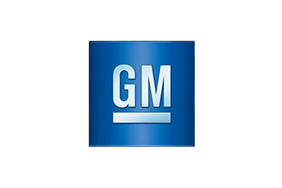Meet the People Behind GM’s All-Electric Future PART 1: 1:1 With Chief Engineer Jesse Ortega
GM celebrates the employees who continue to innovate and push the company closer to its vision
Published 02-21-20
Submitted by General Motors
 “When thinking about our vision for a world with zero crashes, zero emissions and zero congestion, it really energizes me because I know I™m working toward a vision that is truly resonating with a lot of people here at GM, in the industry and around t
“When thinking about our vision for a world with zero crashes, zero emissions and zero congestion, it really energizes me because I know I™m working toward a vision that is truly resonating with a lot of people here at GM, in the industry and around tThis National Engineers Week, GM celebrates the employees who continue to innovate and push the company closer toward its vision of Zero Crashes, Zero Emissions and Zero Congestion.
“One of the things that draws you to engineering is a desire to learn and to be fascinated by the new,” said Jesse Ortega, chief engineer at General Motors.
Ortega has worked at GM for more than 38 years, designing and engineering vehicles around the globe across multiple vehicle segments. His experience spans chassis systems, vehicle architecture, vehicle performance and product design. In 2016, after leading the vehicle architecture on all mid-size passenger cars, Ortega was deciding what to do next and knew it had to be something that would fascinate him.
“The concept of electric vehicles – plugging in a vehicle and never having to go to a gas station – is captivating,” said Ortega. “It’s like when we put people in a capsule and sent them to the moon…how did they do that? How did that work? That was my draw to working on electric vehicles.”
Similar to the strategy for traditional combustion engine vehicles, bridging design and engineering is vital to delivering new EV products. There is an incredible amount of freedom when designing an EV because there is no engine, transmission, drivelines, exhaust or fuel tank – creating much more space and flexibility for styling and design.
“As engineers, it’s our job to take what is in the designers’ heads and turn it into reality,” said Ortega. “It’s all about striking a balance between engineering and design and pushing each other so we get phenomenal-looking vehicles that are fun to drive.”
Designing EVs that people want to drive is another critical component in growing the number of EVs on the road. “Our goal isn’t just to make one of these. It’s to make thousands of them, so we need to make sure they meet the demands of all our customers, and that the approach is scalable for mass production,” said Ortega.
Using insights from their flagship electric product, the Chevrolet Bolt EV, the GM engineering team understands the value of its spaciousness, quiet performance and power as critical factors for future product development. These same qualities are revered not only by U.S. customers, but by Chevrolet Bolt EV owners in Canada, Mexico, Brazil and the Middle East.
“EVs pull people together around the world,” said Ortega. “A world with zero emissions is something I think everyone can get behind.”
“When thinking about our vision for a world with Zero Crashes, Zero Emissions and Zero Congestion, it really energizes me because I know I’m working toward a vision that is truly resonating with a lot of people here at GM, in the industry, and around the globe,” said Ortega.
Perfecting the design and engineering of EVs to meet customer demand is just one step in achieving widespread EV adoption. Improving battery range and capability, and constructing a viable charging infrastructure are other areas the company is addressing on the journey to an all-electric future.
Visit GM.com for the full story.

General Motors
General Motors
General Motors Corp. (NYSE: GM), the world's largest automaker, has been the global industry sales leader for 75 years. Founded in 1908, GM today employs about 327,000 people around the world. With global headquarters in Detroit, GM manufactures its cars and trucks in 33 countries. In 2005, 9.17 million GM cars and trucks were sold globally under the following brands: Buick, Cadillac, Chevrolet, GMC, GM Daewoo, Holden, HUMMER, Opel, Pontiac, Saab, Saturn and Vauxhall.
More from General Motors

